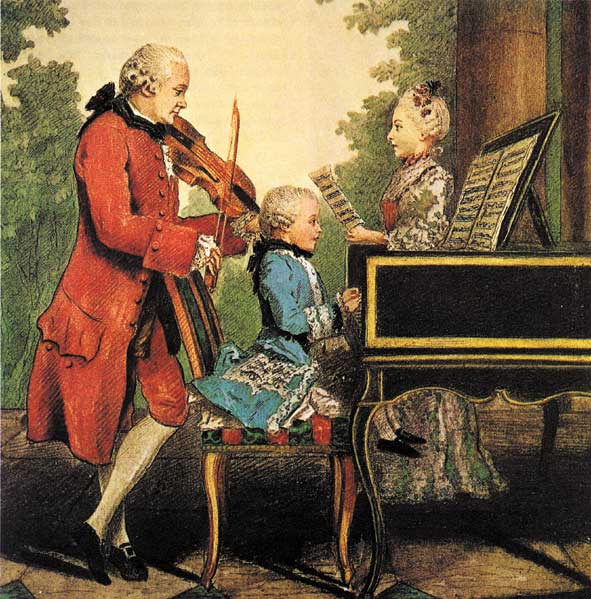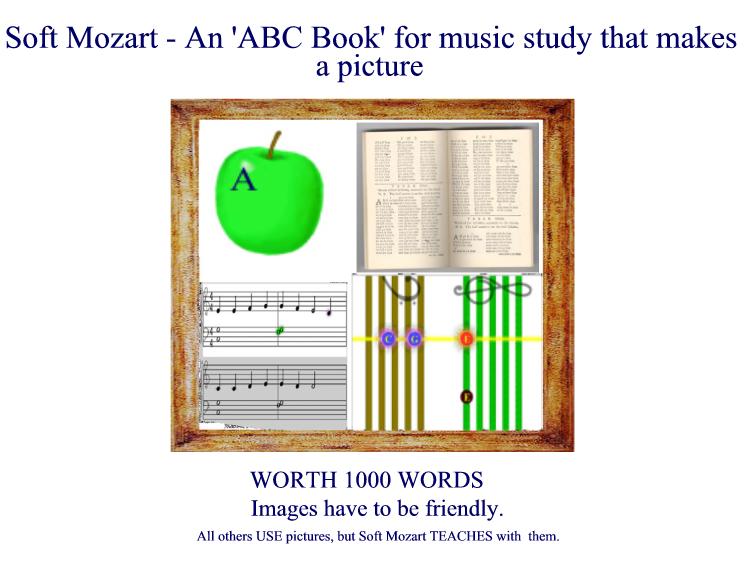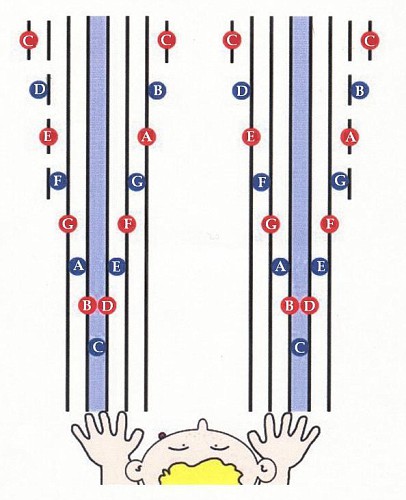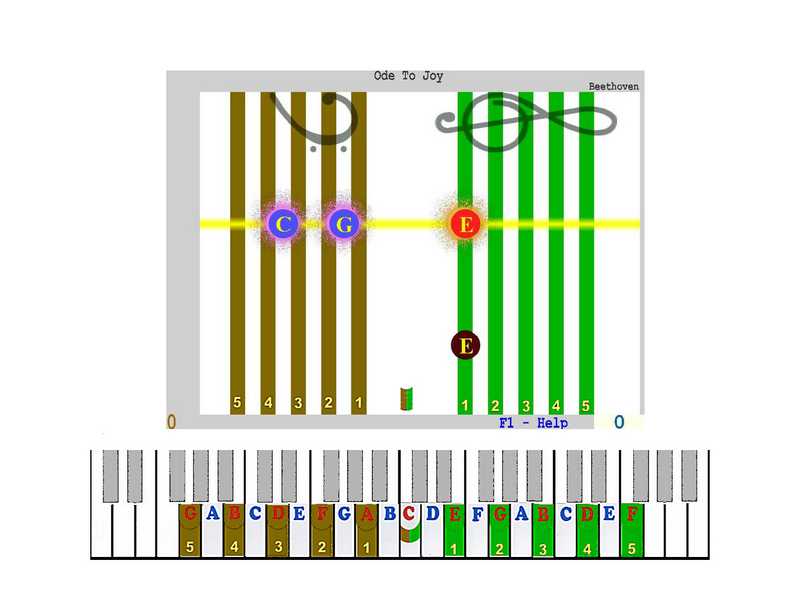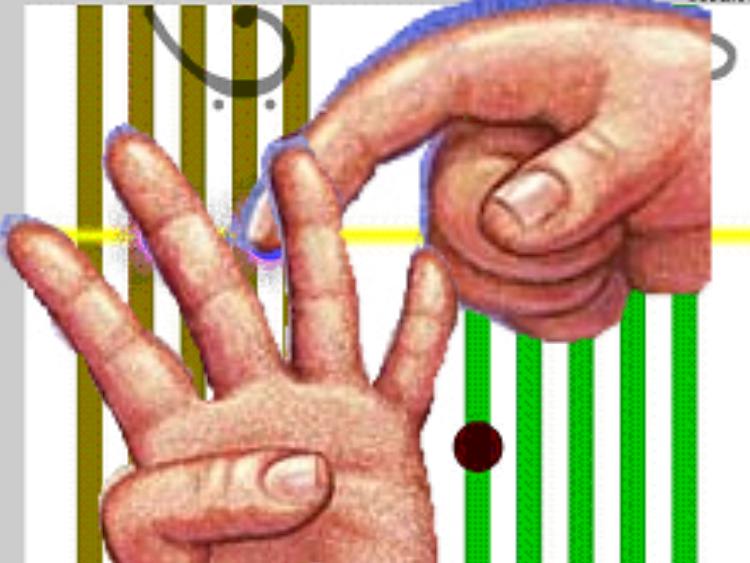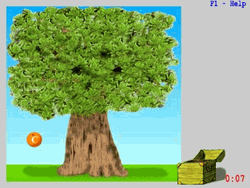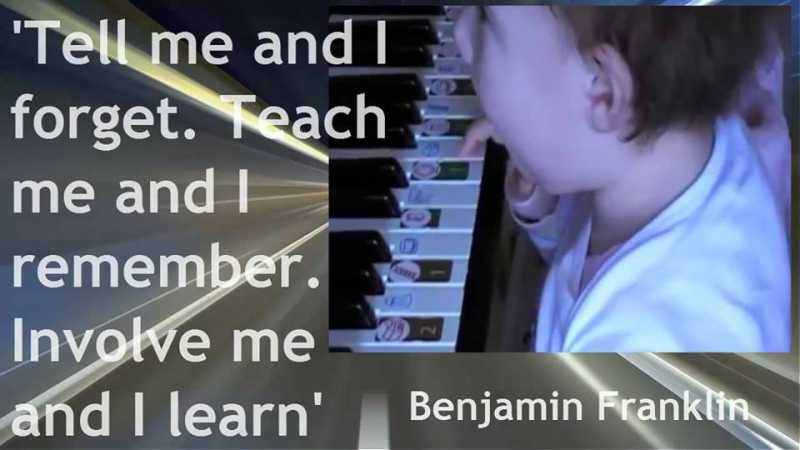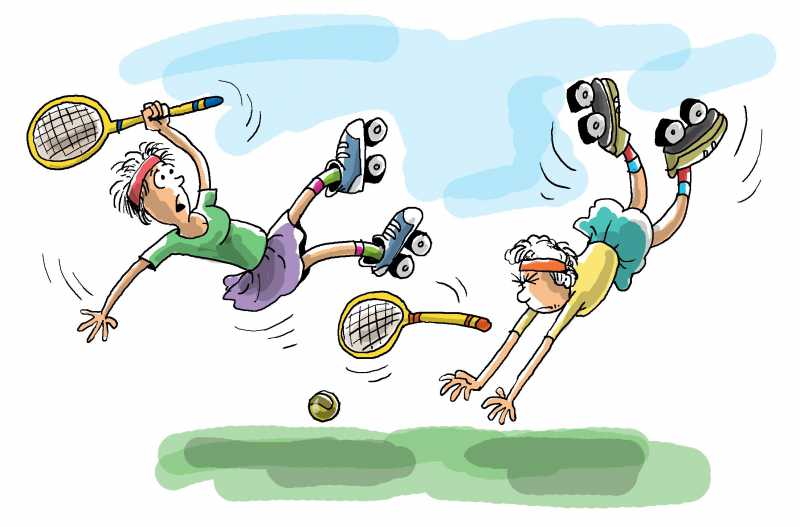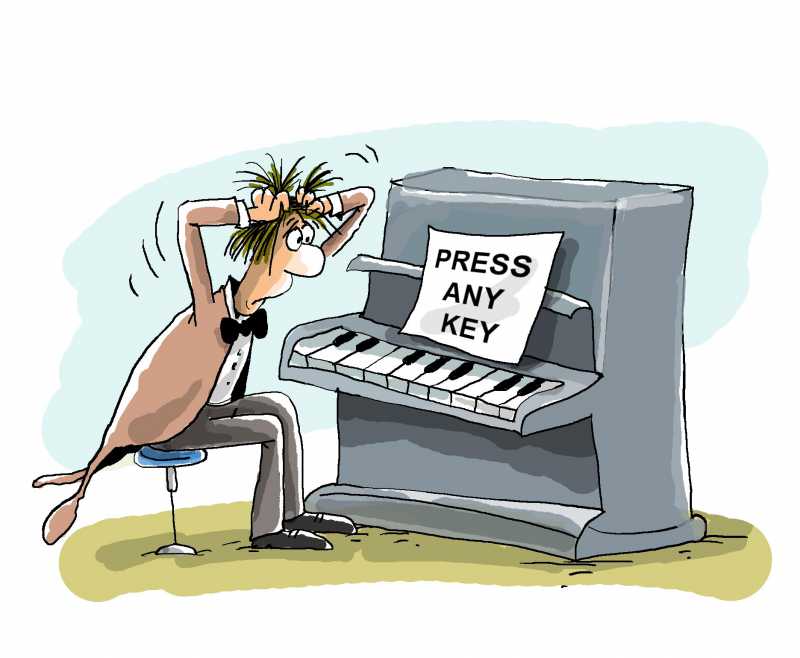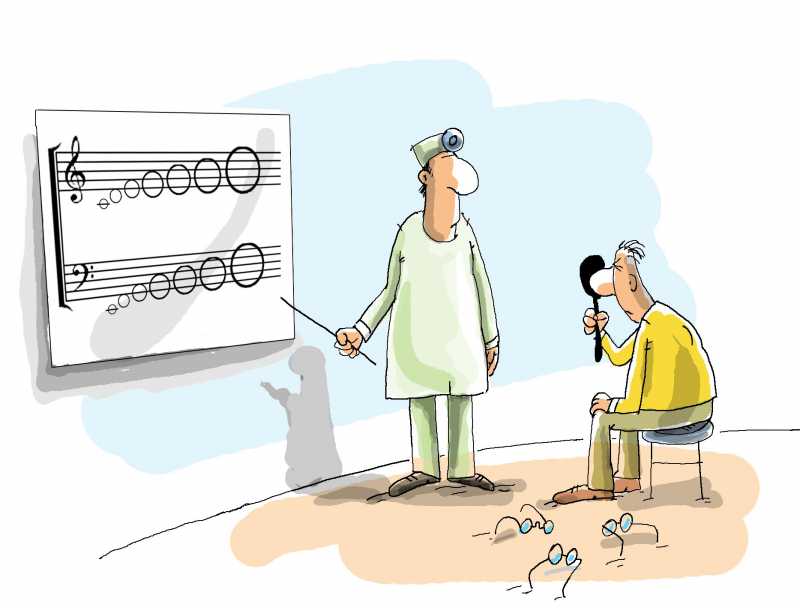- Posts: 7439
- Thank you received: 3295
Our Promotion
The countdown has ended
Save, Сэкономьте, Ahorrar
Nominees: Submit Your Request Through Your Teacher/Curator (12 Nov 2025)
All students of the Soft Mozart Academy who have been nominated for Diplomas and/or Distinction Badges are kindly asked to submit an official request for issuing and mailing their documents.
Hellene Hiner's Blog
Digital technology as a favor for music education
11 Apr 2014 22:31 - 22 Apr 2014 14:57 #14430
by hellene
Back to the Mozart
Digital technology as a favor for music education was created by hellene
English translation of Hellene Hiner's speech in Herzen State Pedagogical University (St. Petersburg, Russia). March 26,2014
1.
One of the paradoxes in this world is that it’s difficult to state ideas in a simple way; it actually takes much less time to make things complicated. Let me give you an example.
In the USA and other countries people call me Hellene Hiner. This name is easy to spell and pronounce in different languages. The Russian version of my name is Yelena.
My name is spelled differently for Russian and English communities for a reason. I try to use common sense in everything and did when I developed my invention – “Soft Mozart” system. Let’s think together, using common sense: if I insisted on calling myself Yelena in the USA, the people that I meet would have to spend unnecessary time and effort learning how to pronounce it. In the English language, the phoneme “le” exists as “lie” or “lio.” People speaking with me would try to pronounce my name as Yeliena or Yeliana. Much too complicated if we really just want to have a conversation! I am perfectly happy to be Hellene for my American friends and audiences.
Changing the spelling of my name doesn’t damage the essence of who I am. Whenever we simplify ideas, it is important to realize when the new version helps us to understand the idea and when a version has been simplified so much that it harms the very essence of the idea trying to be expressed.
While I was working on the “Soft Mozart” system, I set a goal to find the simplest way to state the ideas without damaging any important concepts in the system of music education. Now that the system is being used around the world, I can proudly assure you that I reached that goal. As our seminar progresses, you will see that this is true.
Today we are here with you to discuss the most important topic of modern education – the use of computer technology in music education. For many professors of music in colleges and universities as well as for many traditional music teachers, the combination of words, music, and computers is associated with artificial, squeaky, and crippled inanimate electrical sounds. I have been there, thought that and passed that stage. I hope you will, too. Let’s try together to rethink it.
The words “computer” and “digital” are usually perceived as referring to something dry, abstract, unemotional. These words apply straight to the left hemisphere of our brains. Isn’t it much the same challenge as the name “Yelena” for the English-speaking community? Let’s try to overcome our fears and obstacles and see what we can actually gain if we focus on the essence of the phenomenon and avoid the “naming” part of it.
Think about what has happened in technology over the past two decades: while many of us were all going about our non-computer lives, our competitors – hustlers of the big corporations – managed to get ahead of us.
They were finding ways to use computer technology to get our children to spend much of their “quality time” playing violent and useless computer games. They, and not we, carefully studied the psychology of our children’s perceptions, children of the 21st century. In fact at this point, they, not we, are the rulers of our youth. My company’s goal today is to treat this problem very seriously. Our strategy is to take all the knowledge that has been collected by advertising firms and designers of addictive computer games and use it for raising our children, for educating them about important, useful and eternal values. How we all can make it happen? I will tell you later in this presentation.
To be continued...
1.
One of the paradoxes in this world is that it’s difficult to state ideas in a simple way; it actually takes much less time to make things complicated. Let me give you an example.
In the USA and other countries people call me Hellene Hiner. This name is easy to spell and pronounce in different languages. The Russian version of my name is Yelena.
My name is spelled differently for Russian and English communities for a reason. I try to use common sense in everything and did when I developed my invention – “Soft Mozart” system. Let’s think together, using common sense: if I insisted on calling myself Yelena in the USA, the people that I meet would have to spend unnecessary time and effort learning how to pronounce it. In the English language, the phoneme “le” exists as “lie” or “lio.” People speaking with me would try to pronounce my name as Yeliena or Yeliana. Much too complicated if we really just want to have a conversation! I am perfectly happy to be Hellene for my American friends and audiences.
Changing the spelling of my name doesn’t damage the essence of who I am. Whenever we simplify ideas, it is important to realize when the new version helps us to understand the idea and when a version has been simplified so much that it harms the very essence of the idea trying to be expressed.
While I was working on the “Soft Mozart” system, I set a goal to find the simplest way to state the ideas without damaging any important concepts in the system of music education. Now that the system is being used around the world, I can proudly assure you that I reached that goal. As our seminar progresses, you will see that this is true.
Today we are here with you to discuss the most important topic of modern education – the use of computer technology in music education. For many professors of music in colleges and universities as well as for many traditional music teachers, the combination of words, music, and computers is associated with artificial, squeaky, and crippled inanimate electrical sounds. I have been there, thought that and passed that stage. I hope you will, too. Let’s try together to rethink it.
The words “computer” and “digital” are usually perceived as referring to something dry, abstract, unemotional. These words apply straight to the left hemisphere of our brains. Isn’t it much the same challenge as the name “Yelena” for the English-speaking community? Let’s try to overcome our fears and obstacles and see what we can actually gain if we focus on the essence of the phenomenon and avoid the “naming” part of it.
Think about what has happened in technology over the past two decades: while many of us were all going about our non-computer lives, our competitors – hustlers of the big corporations – managed to get ahead of us.
They were finding ways to use computer technology to get our children to spend much of their “quality time” playing violent and useless computer games. They, and not we, carefully studied the psychology of our children’s perceptions, children of the 21st century. In fact at this point, they, not we, are the rulers of our youth. My company’s goal today is to treat this problem very seriously. Our strategy is to take all the knowledge that has been collected by advertising firms and designers of addictive computer games and use it for raising our children, for educating them about important, useful and eternal values. How we all can make it happen? I will tell you later in this presentation.
To be continued...
Back to the Mozart
Last edit: 22 Apr 2014 14:57 by hellene.
Please Log in or Create an account to join the conversation.
11 Apr 2014 23:19 - 22 Apr 2014 14:57 #14431
by hellene
Back to the Mozart
Replied by hellene on topic Digital technology as a favor for music education
2.
What is a “computer” from the educational point of view? It is an interactive way to communicate with a program or with a person by a code. Computer technologies today are a very powerful educational resource. Not long ago, it took a lot of labor to find any research about any piece of literature. Now such information can be retrieved with the click of a mouse.
With the help of the Internet, we can easily exchange our ideas with people from any country and any part of our planet. Knowledge and skills begin to spread instantly–and this is outstanding! But we don’t use all the potential of digital tools in education today; we can use more interactive learning, graphics, and audio capability for the creation, development and mastery of music skills that we can apply to our academic practice every day.
I would like to offer an unexpected analogy: Leopold Mozart, while teaching his own children music, interacted with them and was available, knowledgeable, and capable of correcting mistakes. He could show them “how it should be” by playing for them, estimating all the errors made and helping fix each and every one of them.
Today, all this valuable feedback can be delivered by the computer program “Soft Way to Mozart.” The best news is that this program will never lose its temper or punish the child for repeating any errors. Does our music education need it? I think we will all find the answer to this question later in this seminar.
I often hear the question: “Do we really need so many mozarts”? Many are afraid that my computer system will promote a disregard for music professionals and will cause piano teachers to be replaced by computers. This is not true! We always need talented people. Music helps develop human brains, and piano playing especially contributes to such development. We also always need talented listeners with well-developed minds for music. Nothing builds musical aptitude better than the personal hands-on experience of playing a musical instrument.
If reading music text and playing the piano becomes popular across the country, many gifted students will start to shine. These students will continue to study and will need performance venues as well as professional teachers to help direct their programs of study. Music studios, philharmonic concert halls and opera houses not only won’t be closed–they will thrive without the help of any subsidies.
Professionals, who would then be needed for polishing the skills created by the software, would have more time to hone their students’ skills and guide their professional training in the right direction. Instead of listening to repeated, tedious drills, these teachers will be able to follow their mission more precisely–they will be able to focus on developing each student’s creative personality.
To understand how we can build our children’s interest in music education, I would like to draw your attention to a very important phenomenon that was given to all of us by nature and that is very widely exploited by producers of violent computer games:
The essence of such a request is “Is it the right move, and if not, what should I do to fix it?”
To be continued...
What is a “computer” from the educational point of view? It is an interactive way to communicate with a program or with a person by a code. Computer technologies today are a very powerful educational resource. Not long ago, it took a lot of labor to find any research about any piece of literature. Now such information can be retrieved with the click of a mouse.
With the help of the Internet, we can easily exchange our ideas with people from any country and any part of our planet. Knowledge and skills begin to spread instantly–and this is outstanding! But we don’t use all the potential of digital tools in education today; we can use more interactive learning, graphics, and audio capability for the creation, development and mastery of music skills that we can apply to our academic practice every day.
I would like to offer an unexpected analogy: Leopold Mozart, while teaching his own children music, interacted with them and was available, knowledgeable, and capable of correcting mistakes. He could show them “how it should be” by playing for them, estimating all the errors made and helping fix each and every one of them.
Today, all this valuable feedback can be delivered by the computer program “Soft Way to Mozart.” The best news is that this program will never lose its temper or punish the child for repeating any errors. Does our music education need it? I think we will all find the answer to this question later in this seminar.
I often hear the question: “Do we really need so many mozarts”? Many are afraid that my computer system will promote a disregard for music professionals and will cause piano teachers to be replaced by computers. This is not true! We always need talented people. Music helps develop human brains, and piano playing especially contributes to such development. We also always need talented listeners with well-developed minds for music. Nothing builds musical aptitude better than the personal hands-on experience of playing a musical instrument.
If reading music text and playing the piano becomes popular across the country, many gifted students will start to shine. These students will continue to study and will need performance venues as well as professional teachers to help direct their programs of study. Music studios, philharmonic concert halls and opera houses not only won’t be closed–they will thrive without the help of any subsidies.
Professionals, who would then be needed for polishing the skills created by the software, would have more time to hone their students’ skills and guide their professional training in the right direction. Instead of listening to repeated, tedious drills, these teachers will be able to follow their mission more precisely–they will be able to focus on developing each student’s creative personality.
To understand how we can build our children’s interest in music education, I would like to draw your attention to a very important phenomenon that was given to all of us by nature and that is very widely exploited by producers of violent computer games:
Cognitive Demand.
This is a basic demand of each human being. We are explorers by nature, but in the process of exploring, we are very careful when we take our first steps into new places; we begin walking by taking baby steps, checking whether or not it is safe, scouting before making one step at a time. This scouting is what I call the “cognitive request.”The essence of such a request is “Is it the right move, and if not, what should I do to fix it?”
Receiving immediate feedback after such a request gives a person a feeling of safety and confidence, motivating him or her to move on more eagerly. Because we are all accustomed to the instant answers offered by computers, today the speed of the feedback to such requests is quite critical.
To be continued...
Back to the Mozart
Last edit: 22 Apr 2014 14:57 by hellene.
Please Log in or Create an account to join the conversation.
12 Apr 2014 17:36 - 22 Apr 2014 14:58 #14443
by hellene
Back to the Mozart
Replied by hellene on topic Digital technology as a favor for music education
3.
This cognitive request is pushing us to communicate online. When we share our thoughts, information or comments, we expect an immediate reaction from our surroundings. Facebook ingeniously uses this very idea by adding a simple LIKE button for all users. Apparently such a simple decision has become very popular among the millions of people that receive immediate answers to every posting on Facebook (their cognitive requests).
Interaction is the very foundation of giving immediate satisfaction for our cognitive questions. So a cognitive request is a thirst for information from a motivated mind.
This exact engine that was given us by Nature is now being exploited by “Big Bosses” in their businesses as a hook that catches our children’s interest for hours and hours every day.
Why do people today spend all their time playing computer or video games, mastering absolutely useless skills by pushing a couple of buttons, yet they couldn’t care less about playing musical instruments, where they could combine business and pleasure? That’s easy! Simply because the video/computer games IMMEDIATELY answer all of their cognitive requests while we music educators keep teaching using the “good old ways” that were used to teach us, when we sat waiting for lessons or letters and answers to our questions for weeks, months or sometimes years.
Let’s not blame the new generation for this attitude, suggesting that they are spoiled by the digital age and video games. We ourselves, each of us, are not any exception: if we don’t receive immediate satisfaction of our own cognitive requests, we easily get frustrated and lose interest in any new activity or new knowledge. Thus, without the precise answer to our questions, such as “Am I making the correct move?” or “What do I do to fix my mistake?” our consciousness has the tendency to fall into a stage similar to a frozen computer screen.
Mature people have some experience at being patient, of having the will and the guts to solve some problems on their own. Amazing as it may sound, we actually grew up with no mobile phones, text messages, Skype or emails. We got used to having to wait, be patient and meditate.
But this new generation of the 21st century does not want to wait—on anything! People expect to find out instantly whether or not they are able to perform a piece of music whenever they like.
Considering that cognitive necessities are basic for a student as well as the fact that the exchange rate of information has increased greatly, we face an urgent need to reassess our kids' education. Old methods barely work nowadays, and when we ignore technology, we teachers quickly lose our credibility among children and youth.
Children’s passion for music and a desire to play instruments on their own not only stayed around but also grew up. Remember the popular worldwide fad of such toys as Guitar Hero or Garage Band, for instance? Millions of users keep purchasing those applications. But are you aware that Guitar Hero does not actually teach a person to play a real guitar? Or to read a music score?
Still our kids waste hours and hours improving their skills at performing on an artificial instrument made particularly for this or that game. It turns out that musically illiterate corporations nowadays coach our children to perform in droves while we, the high-ranking professionals, are pushed aside. That is a pretty grave warning for us teachers and methodologists.
This cognitive request is pushing us to communicate online. When we share our thoughts, information or comments, we expect an immediate reaction from our surroundings. Facebook ingeniously uses this very idea by adding a simple LIKE button for all users. Apparently such a simple decision has become very popular among the millions of people that receive immediate answers to every posting on Facebook (their cognitive requests).
Interaction is the very foundation of giving immediate satisfaction for our cognitive questions. So a cognitive request is a thirst for information from a motivated mind.
This exact engine that was given us by Nature is now being exploited by “Big Bosses” in their businesses as a hook that catches our children’s interest for hours and hours every day.
Why do people today spend all their time playing computer or video games, mastering absolutely useless skills by pushing a couple of buttons, yet they couldn’t care less about playing musical instruments, where they could combine business and pleasure? That’s easy! Simply because the video/computer games IMMEDIATELY answer all of their cognitive requests while we music educators keep teaching using the “good old ways” that were used to teach us, when we sat waiting for lessons or letters and answers to our questions for weeks, months or sometimes years.
Let’s not blame the new generation for this attitude, suggesting that they are spoiled by the digital age and video games. We ourselves, each of us, are not any exception: if we don’t receive immediate satisfaction of our own cognitive requests, we easily get frustrated and lose interest in any new activity or new knowledge. Thus, without the precise answer to our questions, such as “Am I making the correct move?” or “What do I do to fix my mistake?” our consciousness has the tendency to fall into a stage similar to a frozen computer screen.
Mature people have some experience at being patient, of having the will and the guts to solve some problems on their own. Amazing as it may sound, we actually grew up with no mobile phones, text messages, Skype or emails. We got used to having to wait, be patient and meditate.
But this new generation of the 21st century does not want to wait—on anything! People expect to find out instantly whether or not they are able to perform a piece of music whenever they like.
Considering that cognitive necessities are basic for a student as well as the fact that the exchange rate of information has increased greatly, we face an urgent need to reassess our kids' education. Old methods barely work nowadays, and when we ignore technology, we teachers quickly lose our credibility among children and youth.
Children’s passion for music and a desire to play instruments on their own not only stayed around but also grew up. Remember the popular worldwide fad of such toys as Guitar Hero or Garage Band, for instance? Millions of users keep purchasing those applications. But are you aware that Guitar Hero does not actually teach a person to play a real guitar? Or to read a music score?
Still our kids waste hours and hours improving their skills at performing on an artificial instrument made particularly for this or that game. It turns out that musically illiterate corporations nowadays coach our children to perform in droves while we, the high-ranking professionals, are pushed aside. That is a pretty grave warning for us teachers and methodologists.
Back to the Mozart
Last edit: 22 Apr 2014 14:58 by hellene.
Please Log in or Create an account to join the conversation.
12 Apr 2014 22:33 - 22 Apr 2014 14:58 #14449
by hellene
Back to the Mozart
Replied by hellene on topic Re: Digital technology as a favor for music education
4
Right now, we must interrupt this process in order to teach our children to play Mozart and Bach on real keyboards following the real scores. The method that can help us achieve that goal is the point of today's seminar.
Motivation . . .
One of the most important issues in music studies is a lack of motivation to study long and hard. One of the reasons that cause such a problem is the lack of immediate satisfaction of cognitive demands.
We can talk as much as we want about the benefits of music studies, but the absence of actual achievement will be what determines whether or not a person stays motivated to learn.
We grossly overestimate the role of a precious piece of music that a person learns to play in a desire to get a music education. Let me provide a brief example. Before the extensive use of Alphabet Book (Russian: Azbuka) with illustrations, as far back as the late 19th to the early 20th centuries, Lev Tolstoy set up a hypothesis that an engaging colorful story might be enough motivation for students to overcome their problems with reading. In 1872, he created Azbuka with short entertaining stories for kids.
It didn’t work. This approach neither invoked any significant response in education nor eliminated illiteracy. The absence of immediate cognitive satisfaction was the missing link in Tolstoy's Azbuka. The long-term objective (to read the story and understand its flavor) seemed too distant, and being unable to fulfill a student’s cognitive demands was too severe.
The use of pictures beside some abstract figures (the letters of the alphabet) solved the problem of pronunciation and memorization.
Methods like this looked quite primitive and perilous. It is hard to believe, but at the beginning of 20th century lots of teachers and methodologists flatly contested the use of pictures in alphabet studies.
In the opinion of the former, such an approach would have only spoiled our children, and they would never learn to read regular texts.
These hesitant teachers did not take into account the phenomenon of our cognitive needs, which shows that by receiving instant responses to our cognitive requests, we rapidly move on, constructing new grounds for new cognitive needs, and our requests become involved in an infinite process.
That is exactly the feature used by Big Bosses to hook our kids and make them strive for more and more complex levels of useless games. These game designers utilize a person's deep cognitive mechanics for solving futile, sometimes even dangerous tasks.
We can change the stream and substitute the excitement of collecting virtual treasures for collecting true ones. Following my program, kids become enthralled with learning musical compositions; they compete with each other in hitting a higher quantity and level of performance while lowering their number of mistakes.
Unlike our competitors, we do not feel it necessary to invent fantastic, spurious spaces. The art of music is an inexhaustible source of true treasures that can spiritually enrich every human being.
Right now, we must interrupt this process in order to teach our children to play Mozart and Bach on real keyboards following the real scores. The method that can help us achieve that goal is the point of today's seminar.
Motivation . . .
One of the most important issues in music studies is a lack of motivation to study long and hard. One of the reasons that cause such a problem is the lack of immediate satisfaction of cognitive demands.
We can talk as much as we want about the benefits of music studies, but the absence of actual achievement will be what determines whether or not a person stays motivated to learn.
We grossly overestimate the role of a precious piece of music that a person learns to play in a desire to get a music education. Let me provide a brief example. Before the extensive use of Alphabet Book (Russian: Azbuka) with illustrations, as far back as the late 19th to the early 20th centuries, Lev Tolstoy set up a hypothesis that an engaging colorful story might be enough motivation for students to overcome their problems with reading. In 1872, he created Azbuka with short entertaining stories for kids.
It didn’t work. This approach neither invoked any significant response in education nor eliminated illiteracy. The absence of immediate cognitive satisfaction was the missing link in Tolstoy's Azbuka. The long-term objective (to read the story and understand its flavor) seemed too distant, and being unable to fulfill a student’s cognitive demands was too severe.
The use of pictures beside some abstract figures (the letters of the alphabet) solved the problem of pronunciation and memorization.
Methods like this looked quite primitive and perilous. It is hard to believe, but at the beginning of 20th century lots of teachers and methodologists flatly contested the use of pictures in alphabet studies.
In the opinion of the former, such an approach would have only spoiled our children, and they would never learn to read regular texts.
These hesitant teachers did not take into account the phenomenon of our cognitive needs, which shows that by receiving instant responses to our cognitive requests, we rapidly move on, constructing new grounds for new cognitive needs, and our requests become involved in an infinite process.
Moreover, the more we are confident in a particular area, the more boldly and emphatically we strive to improve our skills.
That is exactly the feature used by Big Bosses to hook our kids and make them strive for more and more complex levels of useless games. These game designers utilize a person's deep cognitive mechanics for solving futile, sometimes even dangerous tasks.
We can change the stream and substitute the excitement of collecting virtual treasures for collecting true ones. Following my program, kids become enthralled with learning musical compositions; they compete with each other in hitting a higher quantity and level of performance while lowering their number of mistakes.
Unlike our competitors, we do not feel it necessary to invent fantastic, spurious spaces. The art of music is an inexhaustible source of true treasures that can spiritually enrich every human being.
Back to the Mozart
Last edit: 22 Apr 2014 14:58 by hellene.
Please Log in or Create an account to join the conversation.
15 Apr 2014 21:03 - 22 Apr 2014 14:59 #14458
by hellene
Back to the Mozart
Replied by hellene on topic Digital technology as a favor for music education
5.
Many music teachers call my method new and unique. That is not quite true. Once you have dug into the core of the program, you will discover that the approach actually consists of existing methods: I made the staff ABC-like and interactive; then I developed gradual modifications of musical scores according to the growth of a child’s ability to process abstract information.
I balanced this process with concrete hints. That is how kids are led from the ABC’s to picture books, from illustrated books to stories and novels and much further. And that’s how “Soft Way to Mozart” leads them through the process of learning to read and play music.
In the scope of youth education, it is a common practice to alter the visual presentation of text to make it easier for people of different ages and experiences to understand. I made “Soft Way to Mozart” the same.
Following the principle of an illustrated ABC book, I picked out an abstract unit—a note—and interpreted it through specific images. For instance, each note embraces the following parameters:
- the name of the note;
- its location (on or between the staff lines);
- its location on the staff (the sequence number of the line or space between the lines);
- its duration;
As in an ABC book, I put the name of the note right inside the note's round mark. Notes that are on and between the staff lines were painted with two contrasting colors. I turned the staff to a vertical instead of horizontal position and accented its symmetry
with a color code.
I also showed the duration of each note by using animation and computer technologies.
In this coordinate system, the staff with its clefs going up, together with the keys going up, appeared to be a single unit. Note C of the 1st octave became a kind of pole, the origin of this musical thermometer for the coordinates of each note.
Colors and pictures helped me emphasize the individual features of each note’s sign. Later, I was surprised to learn that the approach to the color spectrum and images used in my system is already approved in educational practices around the world.
So, pictures containing solfege names of notes (“do” for “door” or house, “re” for “rain” or mi to 'mirror') are borrowed from the ABC book.
The choice of the color red to represent notes on the staff lines and the use of the color blue to represent notes between the lines follows the Guidonian hand, whereby fingers are seen as lines and spaces between them–as air.
For the music staff, I used two non-contrasting but complementary colors: brown and green. These are colors we see in nature; the colors of a tree, whereby the transition from trunk to crown mirrors the gradual transition of the scale from low to high.
As you can see, there was nothing accidental about my choices in presenting abstract concepts through concrete forms–and there are no concepts that were not originally embedded within the music system.
As expected, these proven approaches of transforming abstract concepts into concrete ones greatly helped us offer immediate satisfaction of some of the cognitive needs of students, specifically, the ability to name a note and locate it on the keyboard.
It turned out that these problems could not be solved by graphics alone.
Modern music technology proved to be the best tool for tackling such problems. With the help of technology, I was able to effectively establish a process of understanding the musical text.
This digital approach helped me develop a system that is based on immediately satisfying almost all of the cognitive needs of students. Now, when parents and teachers from many countries tell me that it is difficult to pull children away from “Soft Way to Mozart” piano lessons, it confirms my belief that this is the precise direction in which we should all move and work to further expand the popularity of playing the piano.
To be continued...
“Soft Way to Mozart” is a Traditional and Approved Approach in Education.
Many music teachers call my method new and unique. That is not quite true. Once you have dug into the core of the program, you will discover that the approach actually consists of existing methods: I made the staff ABC-like and interactive; then I developed gradual modifications of musical scores according to the growth of a child’s ability to process abstract information.
I balanced this process with concrete hints. That is how kids are led from the ABC’s to picture books, from illustrated books to stories and novels and much further. And that’s how “Soft Way to Mozart” leads them through the process of learning to read and play music.
“Soft Way to Mozart” is an Elementary and Interactive Staff.
In the scope of youth education, it is a common practice to alter the visual presentation of text to make it easier for people of different ages and experiences to understand. I made “Soft Way to Mozart” the same.
Following the principle of an illustrated ABC book, I picked out an abstract unit—a note—and interpreted it through specific images. For instance, each note embraces the following parameters:
- the name of the note;
- its location (on or between the staff lines);
- its location on the staff (the sequence number of the line or space between the lines);
- its duration;
As in an ABC book, I put the name of the note right inside the note's round mark. Notes that are on and between the staff lines were painted with two contrasting colors. I turned the staff to a vertical instead of horizontal position and accented its symmetry
with a color code.
I also showed the duration of each note by using animation and computer technologies.
In this coordinate system, the staff with its clefs going up, together with the keys going up, appeared to be a single unit. Note C of the 1st octave became a kind of pole, the origin of this musical thermometer for the coordinates of each note.
Colors and pictures helped me emphasize the individual features of each note’s sign. Later, I was surprised to learn that the approach to the color spectrum and images used in my system is already approved in educational practices around the world.
So, pictures containing solfege names of notes (“do” for “door” or house, “re” for “rain” or mi to 'mirror') are borrowed from the ABC book.
The choice of the color red to represent notes on the staff lines and the use of the color blue to represent notes between the lines follows the Guidonian hand, whereby fingers are seen as lines and spaces between them–as air.
For the music staff, I used two non-contrasting but complementary colors: brown and green. These are colors we see in nature; the colors of a tree, whereby the transition from trunk to crown mirrors the gradual transition of the scale from low to high.
As you can see, there was nothing accidental about my choices in presenting abstract concepts through concrete forms–and there are no concepts that were not originally embedded within the music system.
As expected, these proven approaches of transforming abstract concepts into concrete ones greatly helped us offer immediate satisfaction of some of the cognitive needs of students, specifically, the ability to name a note and locate it on the keyboard.
However, the particular qualities of musical language (as distinct from spoken or written language) presented me with the need to solve more complex problems.
It turned out that these problems could not be solved by graphics alone.
Modern music technology proved to be the best tool for tackling such problems. With the help of technology, I was able to effectively establish a process of understanding the musical text.
This digital approach helped me develop a system that is based on immediately satisfying almost all of the cognitive needs of students. Now, when parents and teachers from many countries tell me that it is difficult to pull children away from “Soft Way to Mozart” piano lessons, it confirms my belief that this is the precise direction in which we should all move and work to further expand the popularity of playing the piano.
To be continued...
Back to the Mozart
Last edit: 22 Apr 2014 14:59 by hellene.
The following user(s) said Thank You: camelia1902
Please Log in or Create an account to join the conversation.
20 Apr 2014 19:13 - 22 Apr 2014 15:00 #14490
by hellene
Back to the Mozart
Replied by hellene on topic Digital technology as a favor for music education
6.
There is a difference between sight reading music and reading text, in terms of the immediate gratification of cognitive requests.
What is the difference?
Musical language is an abstraction of the highest order. Reading literacy is based on specific words that define specific images.
When learning to read, a beginner can rely on his own speech. He can also get help from his environment, which will help determine the error and immediately suggest how to fix it.
When reading music, with rare exceptions, a student has no realistic opportunity to get immediate answers to the cognitive questions. For many beginners, the biggest challenge is the need to deal with musical text all by themselves, with no one around to answer questions.
The problems of visual perception of sheet music, as the main obstacle to teaching musical literacy.
Is it possible to learn to play tennis on roller skates?
It so happened that the musical notation, conceived by Guido of Arezzo as a visual aid to help choristers visualize the movement of a monophonic melody, ceased to be legible with the development of polyphony.
The point of optimal perception.
When reading sheet music, a student faces the first stumbling block in the physiological structure of the human eye. The eyeball is in constant motion, and even when we fix our gaze on an object, it only seems that the image is stable. The image is stabilized by our consciousness. Once signals or impulses come into the visual cortex of the brain, they are processed and linked to each other by means of visual memory.
In order for an object to draw attention, be seen, reviewed and analyzed, it is necessary that the person can quickly identify the object, isolate it from the general influx of visual information, and fix it in his memory as a stable image.
In this way, we teach our newborn to first see big, colorful toys. We use rattles to help the child isolate objects not only by their bright colors, but also by their sound effects. Gradually the toys become smaller and more detailed.
We also consciously increase the letters of the alphabet, making them three-dimensional and tangible. Using blocks, a child can not only see but also touch these letters, hear how they sound, and even try to taste them!
When we begin to teach our children to read, we are again faced with the fact that combining letters into words requires education and training. An equally important step in learning to read is learning to read along a line. In early children's books, we see large fonts, a small number of lines per page, and large pictures to help children understand the meaning of what they are reading through the help of specific images.
The optimal point of perception of an object occurs when the individual not only “captures” the visual object, but also manages to see and explore its features. Every person draws upon his own visual training in order to perceive abstract text: some are able to quickly absorb text diagonally, while others struggle to distinguish a single unit–the letter.
Of course, all of this depends on the training as well as the individual characteristics of the person. But our goal is always to keep this in mind, and where possible, to present musical text in a format that best suits the needs of the student. Today, this is made possible by the program “Soft Way to Mozart.”
We must remember that the point of optimal perception is directly related to the structure of the eye itself. Any attempt to explain to a person's eyes, how they should work is a waste of time. Eyes are, of course, going to see things the way they’re intended to see things.
To be continued...
There is a difference between sight reading music and reading text, in terms of the immediate gratification of cognitive requests.
What is the difference?
Musical language is an abstraction of the highest order. Reading literacy is based on specific words that define specific images.
When learning to read, a beginner can rely on his own speech. He can also get help from his environment, which will help determine the error and immediately suggest how to fix it.
When reading music, with rare exceptions, a student has no realistic opportunity to get immediate answers to the cognitive questions. For many beginners, the biggest challenge is the need to deal with musical text all by themselves, with no one around to answer questions.
It is then that a digital piano or a synthesizer, connected to a computer, becomes an effective training device, an indispensable tool for the formation, development and improvement of sight reading skills; the development of hearing and aural skills; the development of fine motor skills; the coordination of both hands; the ability to learn pieces by memory; and the ability to succeed at many other simple and complex activities.
The problems of visual perception of sheet music, as the main obstacle to teaching musical literacy.
Is it possible to learn to play tennis on roller skates?
It so happened that the musical notation, conceived by Guido of Arezzo as a visual aid to help choristers visualize the movement of a monophonic melody, ceased to be legible with the development of polyphony.
The point of optimal perception.
When reading sheet music, a student faces the first stumbling block in the physiological structure of the human eye. The eyeball is in constant motion, and even when we fix our gaze on an object, it only seems that the image is stable. The image is stabilized by our consciousness. Once signals or impulses come into the visual cortex of the brain, they are processed and linked to each other by means of visual memory.
In order for an object to draw attention, be seen, reviewed and analyzed, it is necessary that the person can quickly identify the object, isolate it from the general influx of visual information, and fix it in his memory as a stable image.
In this way, we teach our newborn to first see big, colorful toys. We use rattles to help the child isolate objects not only by their bright colors, but also by their sound effects. Gradually the toys become smaller and more detailed.
We also consciously increase the letters of the alphabet, making them three-dimensional and tangible. Using blocks, a child can not only see but also touch these letters, hear how they sound, and even try to taste them!
When we begin to teach our children to read, we are again faced with the fact that combining letters into words requires education and training. An equally important step in learning to read is learning to read along a line. In early children's books, we see large fonts, a small number of lines per page, and large pictures to help children understand the meaning of what they are reading through the help of specific images.
That is why all of the written languages on this planet are linear.
The optimal point of perception of an object occurs when the individual not only “captures” the visual object, but also manages to see and explore its features. Every person draws upon his own visual training in order to perceive abstract text: some are able to quickly absorb text diagonally, while others struggle to distinguish a single unit–the letter.
Of course, all of this depends on the training as well as the individual characteristics of the person. But our goal is always to keep this in mind, and where possible, to present musical text in a format that best suits the needs of the student. Today, this is made possible by the program “Soft Way to Mozart.”
We must remember that the point of optimal perception is directly related to the structure of the eye itself. Any attempt to explain to a person's eyes, how they should work is a waste of time. Eyes are, of course, going to see things the way they’re intended to see things.
So the musical vision of beginners requires training—the same type of training that we provide when teaching them to read books.
To be continued...
Back to the Mozart
Last edit: 22 Apr 2014 15:00 by hellene.
Please Log in or Create an account to join the conversation.
Time to create page: 0.325 seconds

